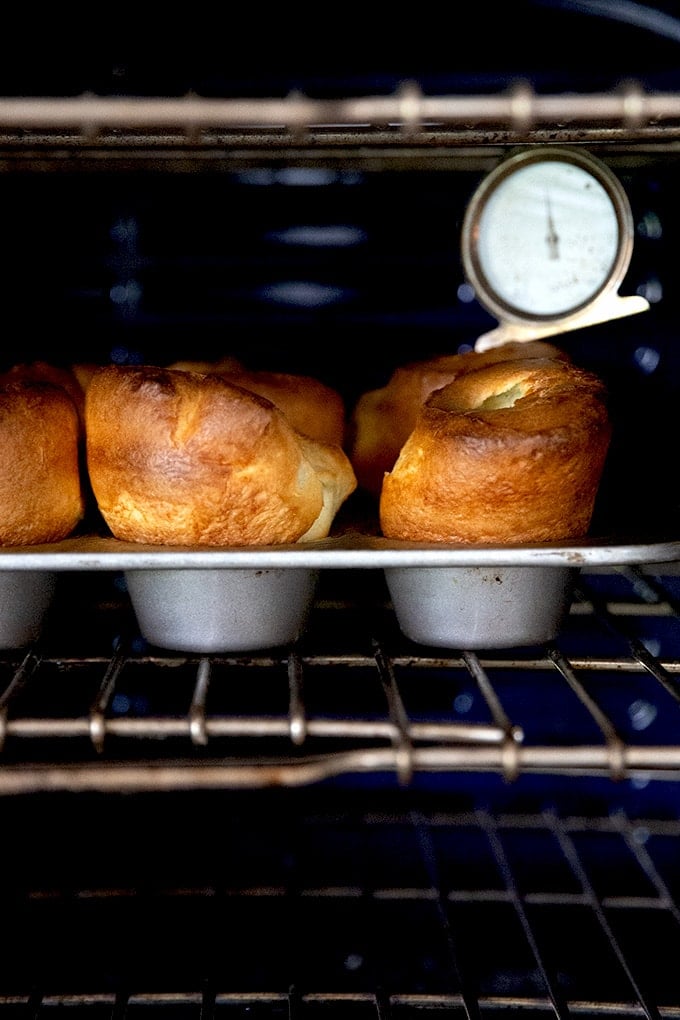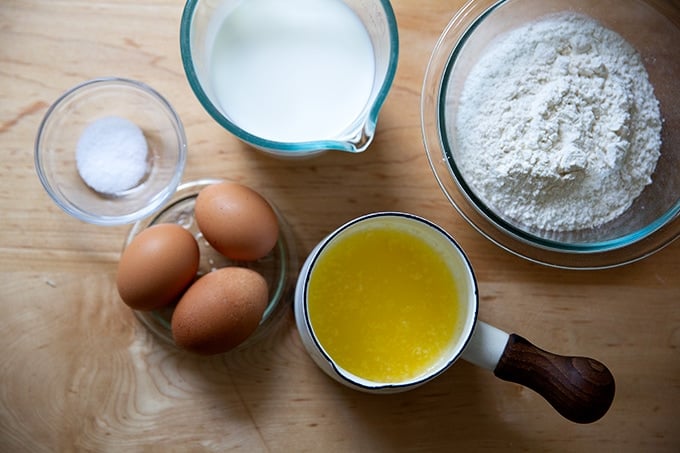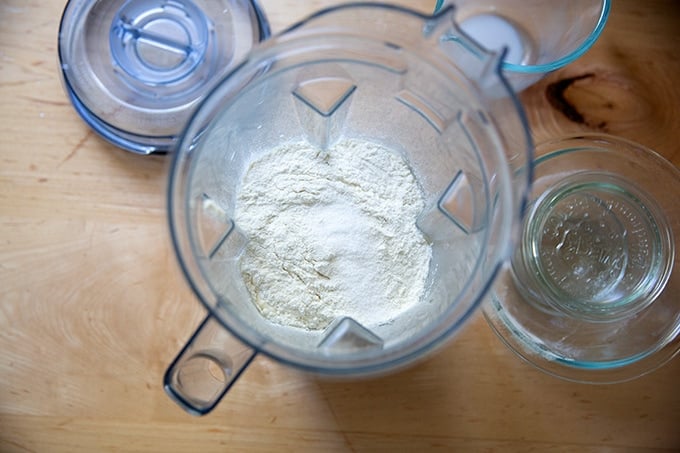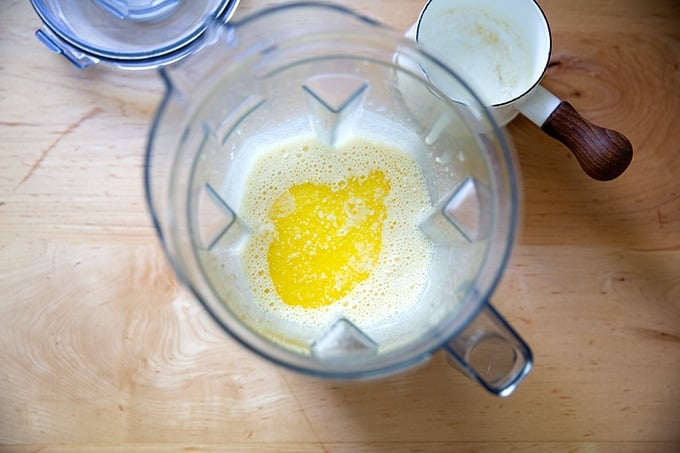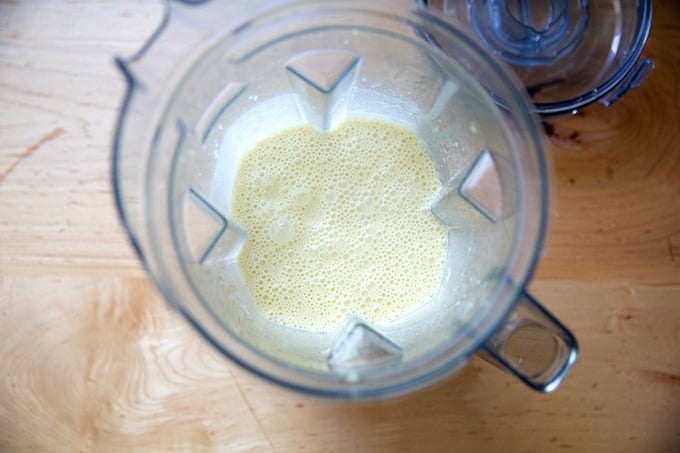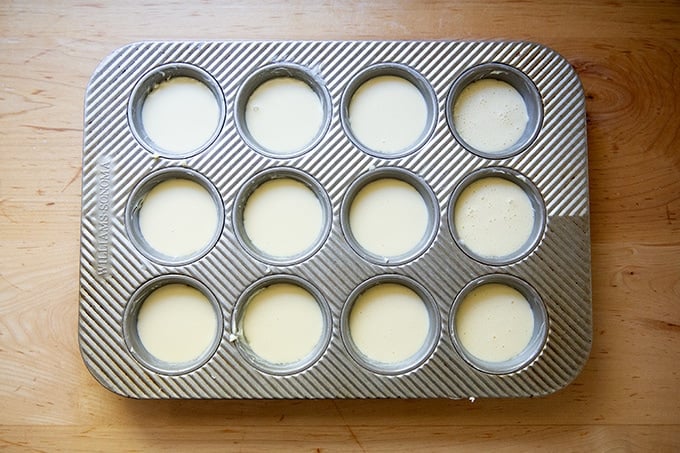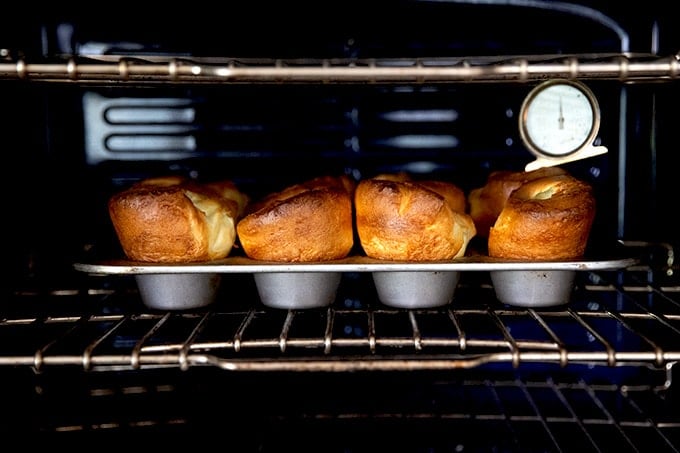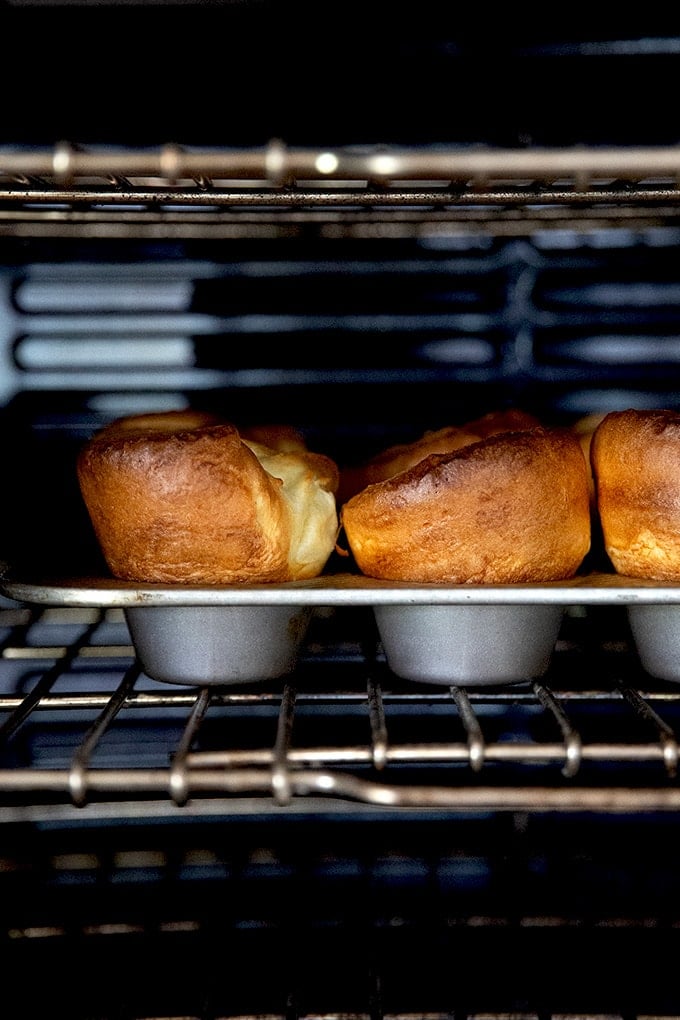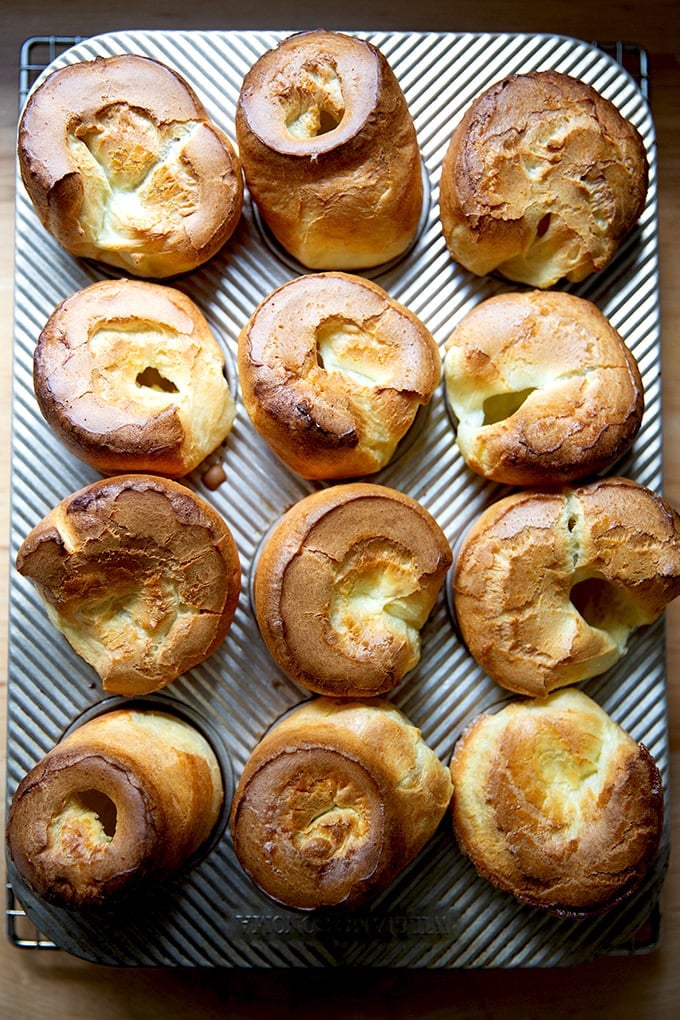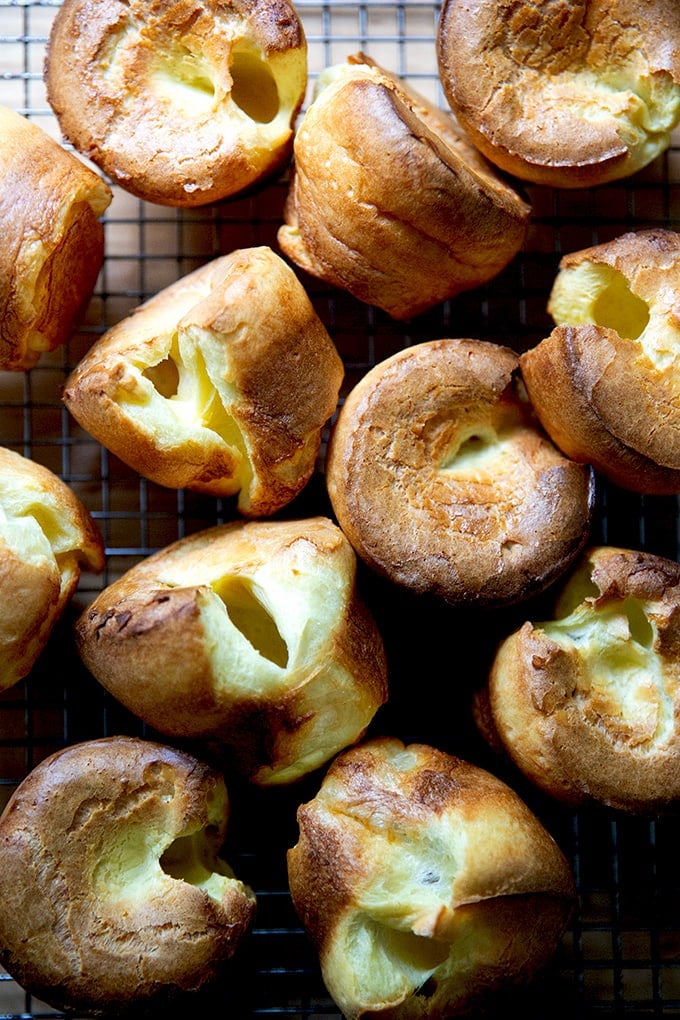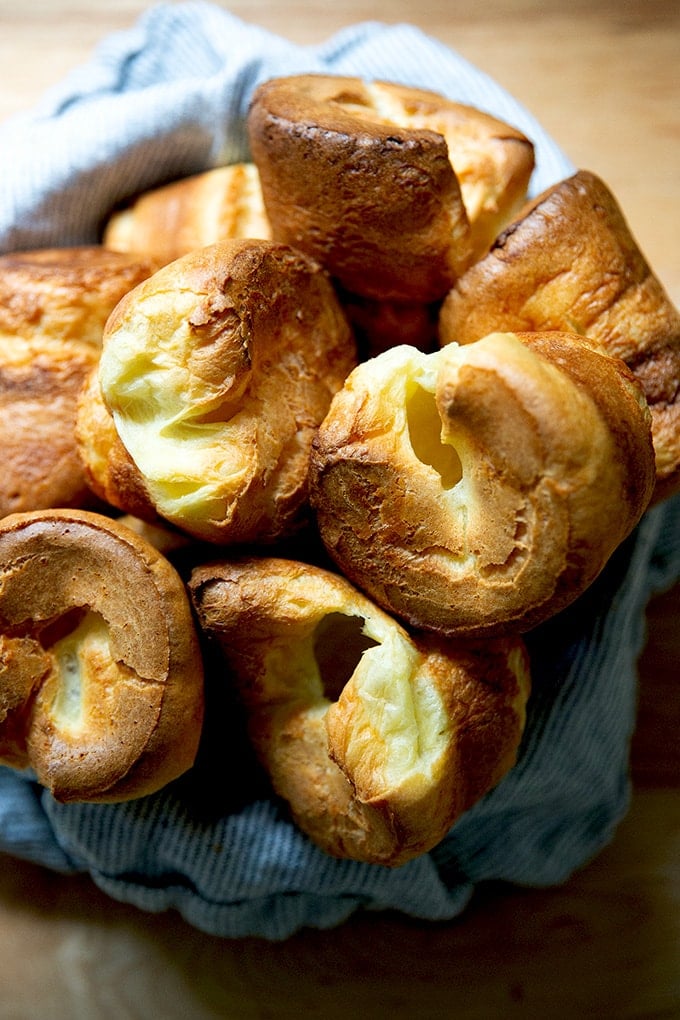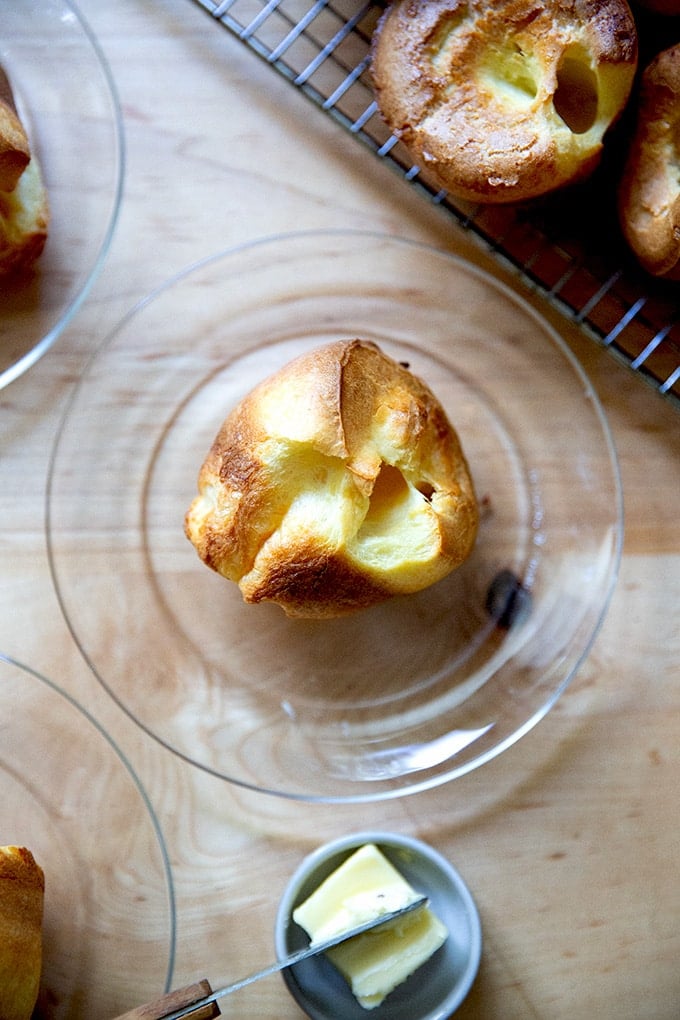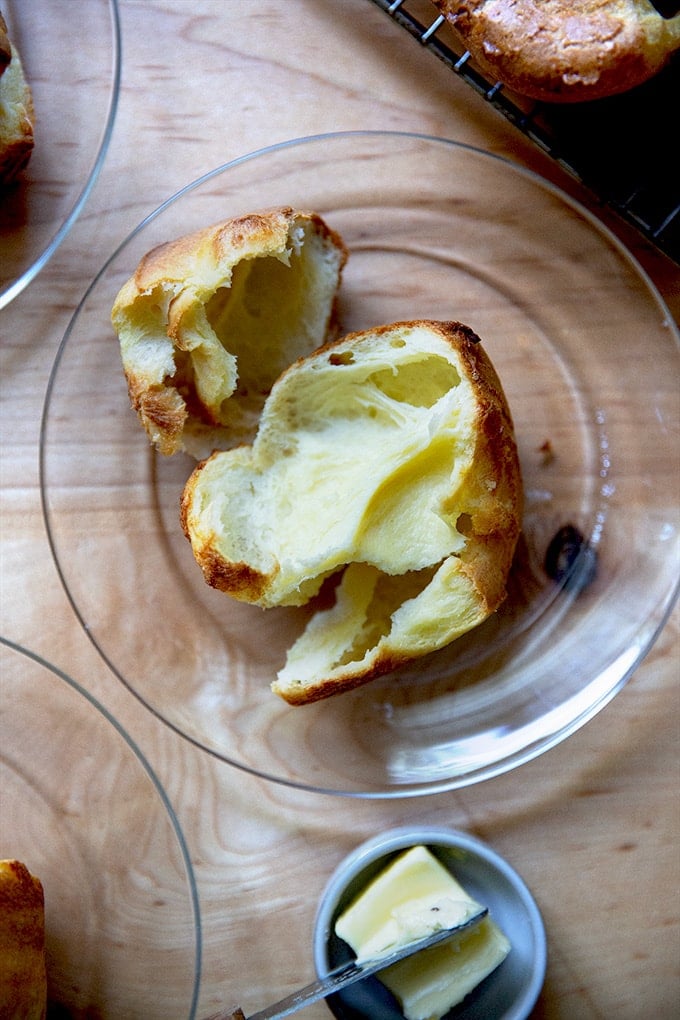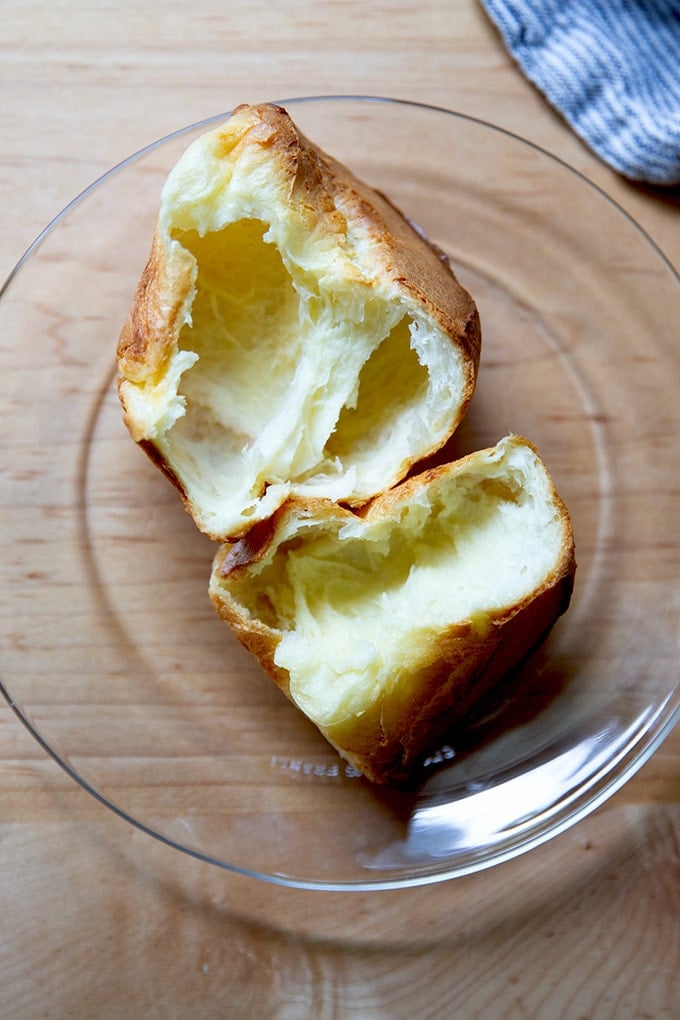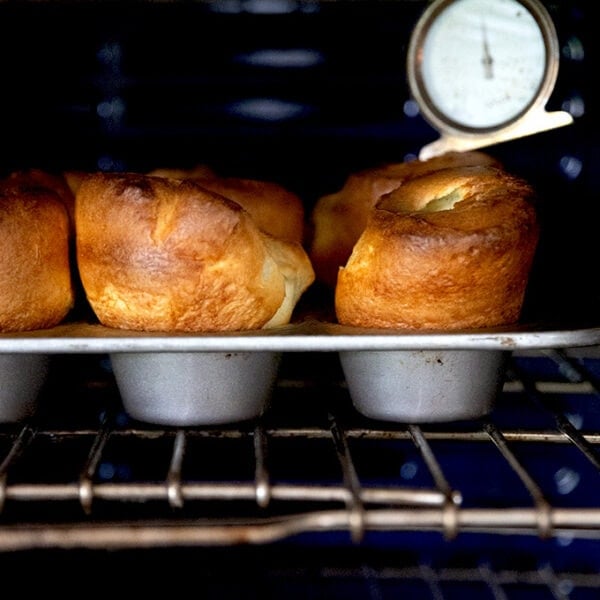These past few weeks, while planning for the holidays ahead, I’ve found myself thinking about my mother’s popovers, something she made often for big family gatherings. She always timed them just right: as we all sat down to eat, our plates full, she’d set two bowls, each lined with a tea towel, brimming with just-baked popovers at each end of the table. In swooped the hands, around went the butter. They were heaven: piping hot, light as air, custardy. On a whim recently, I made my mother’s popovers for a family dinner. Her recipe, I’ve since learned, is similar to many of the popover recipes on the web, but her method follows that of Yorkshire pudding: she preheats her muffin tin with a generous amount of butter in each well before pouring in her popover batter. Traditional Yorkshire pudding calls for heating the muffin tin with meat drippings. As you can imagine, the children, faces pressed against the oven glass door, were instantly transfixed seeing the batter “pop” to such dramatic heights. And upon tasting them, they were smitten. As they tore into them, releasing steam, smearing them with butter, they kept wondering aloud: What did these magical, poofy buns remind them of? Finally one of them exclaimed: Waffles! And they all concurred. I don’t entirely agree with this assessment, but they did nail the batter: flour, eggs, milk, salt, butter. With a little sugar in the mix and syrup for serving, they might be on to something. Having made many batches of popovers over the past few weeks, I’ve learned how to achieve lofty popovers every time. I’ve made a few small changes to my mother’s recipe, namely I don’t let the batter rest for 30 minutes, and I don’t preheat the pan with butter. These steps, I’ve found, are not actually critical for making the popover batter “pop.” Here’s what is:
4 Tips for Lofty Popovers Every Time
Because popovers rely on steam to rise — as opposed to baking powder, baking soda, or yeast — you want your batter warm when entering the oven. This King Arthur Flour article says it best: “The warmer your batter going into the oven, the more quickly it’ll produce steam: simple as that.”
What is the Best Popover Pan?
I love a standard 12-well muffin tin! This USA Muffin Pan is my favorite for the results it produces: evenly baked popovers (or muffins) that release effortlessly from the wells. If you’re planning on making a lot of popovers at once, you may want to opt for the Chicago Metallic Professional 12-Cup Popover Pan, which costs around $28 and makes a batch of mini popovers. It’s such a fun idea for holiday parties!
The Difference Between Popovers and Yorkshire Pudding
As noted above: it’s the baking method. The batter of popovers and traditional British Yorkshire pudding is nearly identical. Yorkshire pudding calls for preheating the pan with meat drippings before pouring the batter over the top.
How to Make Lofty Popovers, Step by Step
Gather your ingredients: eggs, milk, melted butter, flour, and salt. You want your eggs and milk at room temperature — see the recipe box for tips if you forget to leave them out before getting started. Combine the eggs (room temperature), milk (room temperature or slightly warmed), salt, and flour in a blender. Blend for 30 seconds until combined. Alternatively, whisk the ingredients together by hand. I find using the blender ensures a smooth batter, which is what you want here. Add the melted butter and blend again for 15 to 20 seconds. The batter should be smooth: Transfer the batter to a buttered muffin tin, then place in the oven and bake at 425ºF for 20 minutes and 350ºF for 10 minutes: Ta-da! How fun are they? Remove from the oven and admire your work… … briefly! I’m not even sure why I turned these out onto a cooling rack because… … the one rule of popovers is: Eat Immediately! Transfer them to a bowl and pass around the table. Serve with butter on the side. Heaven. 4.9 from 25 reviews This is essentially 1.5 times my mother’s recipe, with influence from both King Arthur Flour and America’s Test Kitchen, both of which emphasized using room temperature or slightly warmed ingredients. In sum, the keys to success here are:
using a scale to measure — it’s the only way to measure accurately using room temperature eggs (see recipe for how to quickly bring your eggs to room temperature) room temperature milk (see recipe for how to quickly bring your milk to room temperature) hot oven bread or all-purpose flour: for especially loft popovers, bread flour is your gal! I have achieved great loft with all-purpose flour as well, but I did achieve the greatest heights when I used bread flour. That said: it’s not all about height. All-purpose flour might have been my favorite flavor- and texture-wise, though I didn’t do a side-by-side taste test, so I can’t say for sure. I suggest: use what you have, and take notes. You can’t go wrong with either. As most of you know, I am partial to King Arthur Flour.
A note on salt: If you are using Morton kosher salt or fine sea salt use 1/2 teaspoon. The pan: I love this USA muffin pan. You can use a traditional 6-well popover pan, too, but I prefer the results when the batter is spread among 12 wells. My batter stuck in my popover pan, too, which made for mangled popovers upon removing them. I highly recommend simply using a metal muffin pan for best results here.
